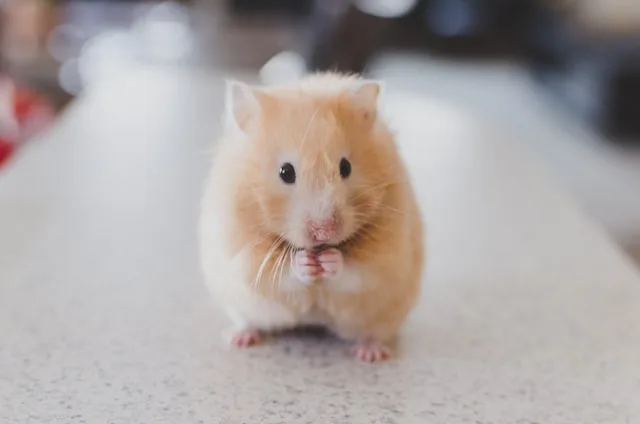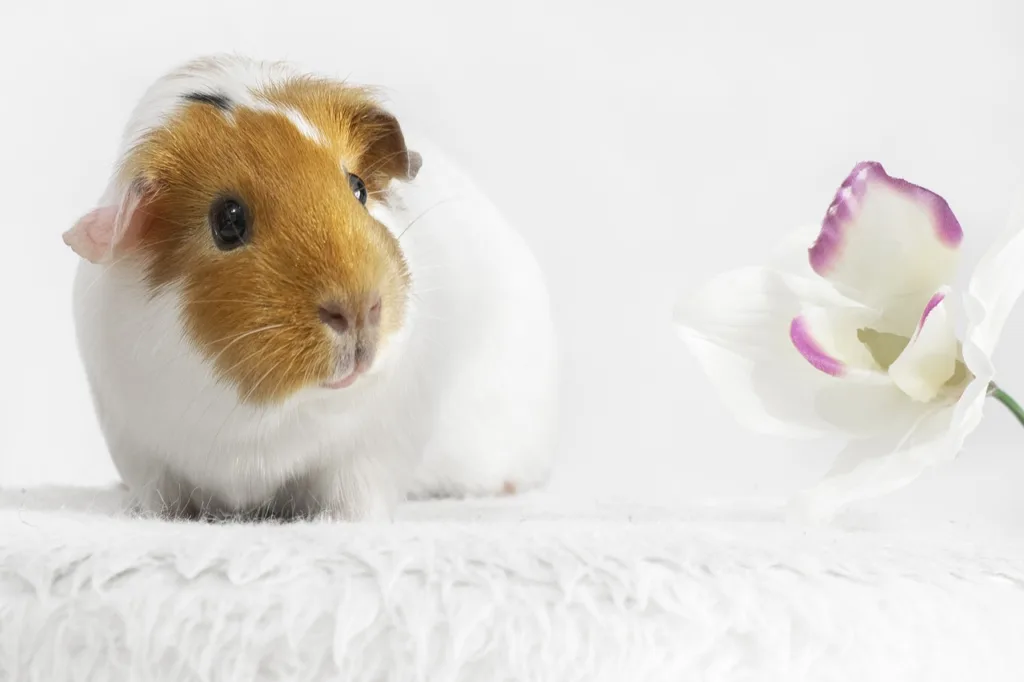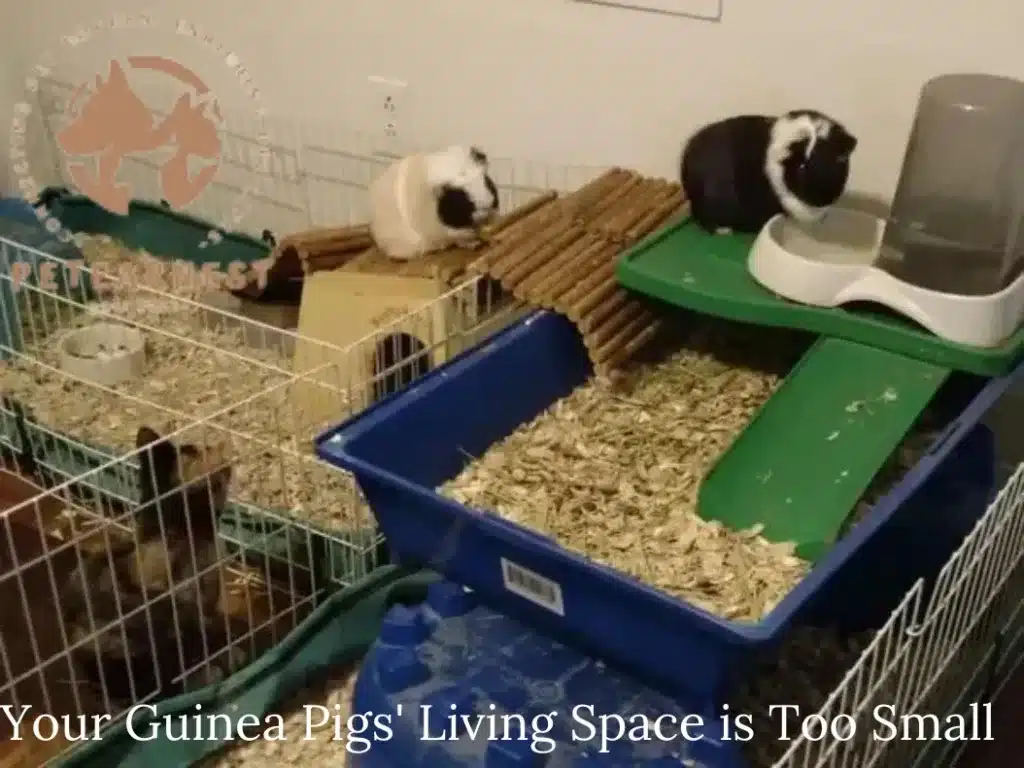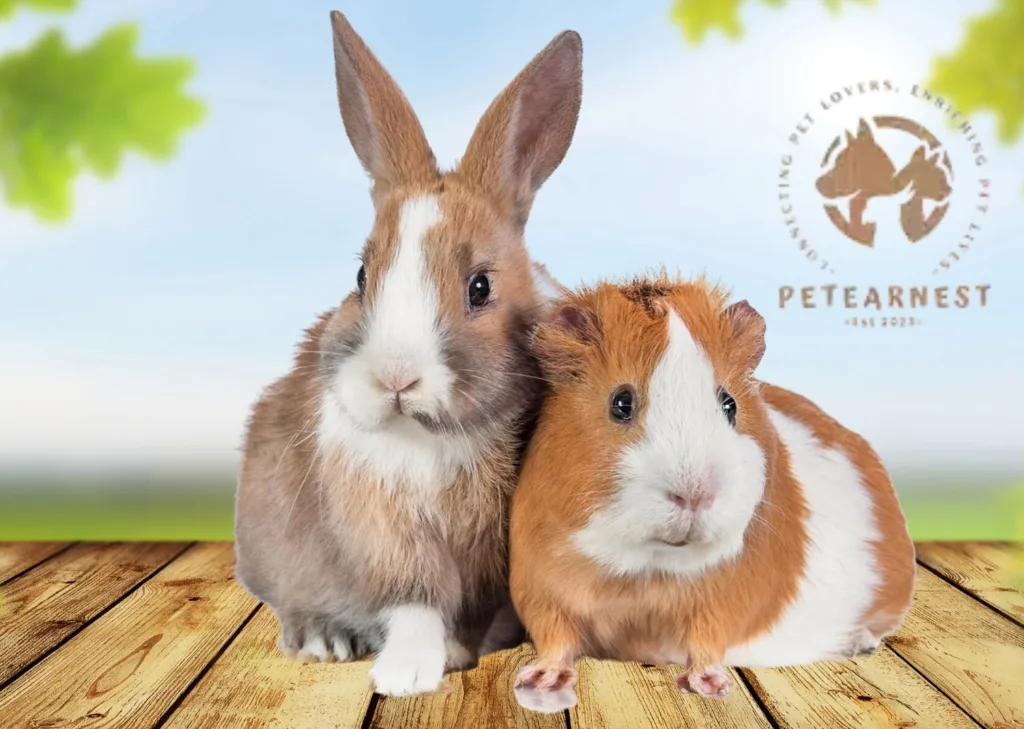In the event that you’re a glad proprietor of a hamster and a guinea pig, you may be contemplating whether it’s feasible to house them together. While it might appear to be really smart to have them share an enclosure and stay with one another, it’s vital to realize that hamsters and guinea pigs are not viable flat mates. As a matter of fact, endeavoring to cohabitate these two species could bring about serious injury or even passing.
Hamsters are singular creatures and are not friendly animals. They like to live alone and can become regional when one more creature is brought into their space. Guinea pigs, then again, are social creatures and flourish in gatherings. Putting a guinea pig in a similar enclosure as a hamster can cause pressure and tension for the two creatures.
In this article, we will dig further into why hamsters and guinea pigs can’t live respectively and why endeavoring to do so isn’t prudent. We’ll investigate the explanations for their inconsistent demeanours and proposition options for different species that your rodents can cohabitate with. All in all, can hamsters and guinea pigs live respectively? How about we find out.
Table of Contents
What Are the Main Differences Between a Hamster and a Guinea Pig?
But the two hamsters and guinea pigs are notable choices for pets, they are very different animals that have a spot with totally different species. From their genuine appearance to their demeanor and dietary necessities, there are a couple of key differentiations that set them to the side.
Guinea pigs, generally called cavies, are neighborhood to South America and have a spot with the assortment Cavia. They are comfortable rodents that are generally greater and more agreeable than hamsters. No matter what their name, they have nothing to do with pigs and are not associated with them by any means. Guinea pigs were at first raised for their tissue, but today, they are popular as pets because of their sensitive and warm nature.
On the other hand, hamsters have a spot with the Cricetidae family and are seen as all over. There are more than 550 sorts of hamsters, of which only five are restrained. Hamsters are generally more unassuming than guinea pigs and are known for their single and local nature. Unlike guinea pigs, hamsters like to live alone and can become powerful when set in a comparative nook as another animal.
With respect to consume less calories, the two hamsters and guinea pigs are herbivores that basically feed on leaves, natural items, vegetables, and roots. In any case, there are a couple of qualifications in their food tendencies. Hamsters favor seeds and can store food, while guinea pigs need to deal with persistently and require an eating routine ample in L-ascorbic corrosive, which they can’t store.
In once-over, while the two hamsters and guinea pigs make exceptional pets, they are different animals with novel necessities and characteristics. Understanding these differentiations is pressing accepting at least for a moment that you’re pondering having both of these pets or trying to house them together.


TABLE OF CORRELATION
| Differences | Guinea Pig | Hamster |
| Size | Bigger: usually between 8 to 12 inches in length | Smaller: usually between 5 to 6 inches in length |
| Classification | Herbivorous cophrages | Omnivorous |
| Number of Species | One species only | 25 species in all |
| Offspring | Fully developed piglets Average: 2-4 per birth |
Blind and hairless pups Average: 6-12 per birth |
| Life Expectancy | 5 to 7 years | 2-3 years |
| Interaction | Friendly with others | Forceful and serious |
| Sound Produced | Loud noises | Noisy but not too loud |
Hamster vs Guinea Pig: How to Easily Recognize Them
What is a Guinea Pig?
The guinea pig, or Cavia porcellus, is a trained creature that is frequently confused with being connected with pigs or having a place with the pig family. Nonetheless, guinea pigs are really rodents and are firmly connected with other South American rodents in the Caviidae family. These lovable creatures have full bodies, short legs, and no tails.
They commonly measure between six to ten inches long and can gauge as much as two pounds. Guinea pigs are frequently held as pets because of their cordial and amiable nature, and they make extraordinary allies for the two youngsters and grown-ups. Conversely, hamsters have a place with the Cricetidae family and have particular contrasts for all intents and purposes and conduct from guinea pigs.
What is a Hamster?
The hamster is a short-followed rodent from the Cricetidae family with the coherent name Cricetus while there are more than 550 kinds of hamsters the splendid hamster Mesocricetus auratus is the most generally held as a pet due to its charming appearance hamsters are basically dealt with oats close by natural items roots and leaves which they store in their huge cheek pockets and pass back on to their homes they are evening time creatures meaning they are by and large unique around night time.
1. Personalities and Temperament: Guinea Pigs Are More Social Than Hamsters
https://youtu.be/ISBzNgFeMUU
Guinea pigs and hamsters are both popular small pets, but they have very different personalities and temperaments. Guinea pigs, in general, are much more social than hamsters. They are social with other guinea pigs, and they also enjoy socializing with humans.
Socializing with Each Other
Guinea pigs are very social animals that love to play and interact with each other. They are known to groom each other and even cuddle up together for warmth. They also communicate with each other through a variety of different sounds, including purring when they are happy. When kept in pairs or groups, guinea pigs will thrive and be much happier than when they are kept alone.
On the other hand, hamsters are less social with each other. In fact, they can become very territorial and aggressive towards each other if they are kept in the same cage. It’s best to keep hamsters separate, or at most, in pairs that have been raised together from a young age.
Socializing with Humans
Guinea pigs are also very social with humans. They enjoy being held, petted, and interacted with. They are gentle and easy to handle, making them great pets for children. In fact, guinea pigs have been shown to have a positive effect on the mental health of children, particularly those with autism.
Hamsters, while they can also be great pets, are less social with humans. They are active and curious creatures but prefer to explore their surroundings on their own. However, if handled from a young age, they can learn to tolerate human interaction and even enjoy being held and played with.
Activity Level
Guinea pigs are generally less active than hamsters. They spend most of their time eating, sleeping, and cuddling up with their cage mates. However, they still require plenty of space to move around and exercise.
Hamsters, on the other hand, are very active and need plenty of opportunities to burn off their energy. They require exercise wheels and toys to climb and explore to prevent them from becoming bored and destructive.
In summary, guinea pigs and hamsters have very different personalities and temperaments. Guinea pigs are more social and enjoy interacting with both other guinea pigs and humans, while hamsters are less social and prefer to explore on their own.
It’s important to provide both species with the appropriate living conditions and social interactions to ensure their health and happiness. Never try to keep them together in the same cage as it could lead to serious injury or even death.
2. Sleep: Hamsters Are Nocturnal, Guinea Pigs Are Diurnal
https://youtu.be/IcRBRcgAgCE
Sleep is an essential part of any animal’s life, and it’s essential to understand their sleeping habits before bringing them home as pets. Here we will discuss the sleeping patterns of hamsters and guinea pigs.
Hamsters: Nocturnal Creatures
Hamsters are nocturnal, meaning they are most active at night and sleep during the day. This sleep pattern can be challenging for owners who prefer to interact with their pets during the day. Hamsters tend to sleep for long periods during the day, so owners may not get to see much of them during these times. Additionally, if you keep your hamster in your room, their nighttime activity can cause disruption to your sleep.
Guinea Pigs: Diurnal Creatures
Guinea pigs, on the other hand, are diurnal, meaning they are most active during the day and tend to sleep at night. They typically take a nap during the middle of the day and are most active in the morning and evening. As a result, guinea pig owners will have the opportunity to interact with their pets more frequently during the day.
Final Thoughts
In summary, understanding the sleep patterns of hamsters and guinea pigs is crucial when deciding which pet to bring home. If you prefer to interact with your pet during the day, a guinea pig may be a better choice. However, if you’re a night owl, a hamster may be a good fit.
https://youtu.be/7mT47Kgar-c
3. Habitat: Guinea Pigs Need More Roaming Space Than Hamsters

Guinea Pigs
Guinea pigs are larger than hamsters and require more space to roam around. Experts suggest providing a cage with a minimum of 7.5 to 10.5 square feet of space per guinea pig, depending on the number of guinea pigs you have. The cage must also be equipped with bedding, a food bowl, a water bottle, and toys to keep them entertained.
Hamsters
While hamsters are smaller than guinea pigs, they still need ample space to live comfortably. A single hamster requires a minimum of 450 square inches of space. If you plan to keep more than one hamster together, ensure that you multiply the space by the number of hamsters you want to keep.
For instance, if you plan to keep two hamsters together, you need a minimum of 900 square inches of space, and for three, you need 1350 square inches. It is essential to provide a cage with bedding, a food bowl, a water bottle, hamster toys, and a wheel for exercise.
Conclusion
It is crucial to provide your pets with adequate space to keep them happy and healthy. While guinea pigs need more space than hamsters, both require plenty of room to move around and play. Before deciding to keep them together, it is essential to consider the space requirements for each species. Always ensure that you provide them with an appropriate habitat to prevent any health problems.
4. Diet: Guinea Pigs Are Hebivores, Hamsters Are Omnivores
https://youtu.be/zi2VznBoqz4
Guinea pigs and hamsters have different dietary needs due to their different digestive systems.
Guinea pigs are herbivores and require a diet made up of entirely plant foods. Pellets can be a good source of nutrients for them, but they also need hay, grass, and green vegetables for a well-rounded diet. Interestingly, guinea pigs may eat their own droppings, which actually contain specific vitamins and nutrients that they need.
On the other hand, hamsters are omnivores, meaning they require both plant-based and animal-based proteins for a balanced diet. Pellets can provide the necessary nutrients, but it’s important to note that hamsters tend to pick through mixed food to eat only their favourite pieces, which may lead to a lack of essential nutrients in their diet.
It’s crucial to provide the correct type and amount of food to keep both guinea pigs and hamsters healthy. Mixing the two types of diets for both animals could be harmful and may not provide the necessary nutrients that they need.
https://youtu.be/Ma23Ejhe0Us
5. Health Issues: Guinea Pigs Are More Resistant Than Hamsters
When it comes to health issues, guinea pigs are generally considered to be more resistant than hamsters. While guinea pigs may develop digestive tract problems and infections, these issues are typically treatable and not life-threatening. However, if you notice any concerning symptoms in your guinea pig, it is always best to take them to a veterinarian.
On the other hand, hamsters are more susceptible to a variety of health issues, including digestive problems, skin diseases, teeth issues, respiratory infections, and tumors. Hamsters can also catch colds, just like humans, and require prompt medical attention if they exhibit any symptoms. These conditions are treatable if caught early, so it is essential to be vigilant and take your hamster to the vet if you notice any signs of illness.
It is important to note that even with proper care and attention, both guinea pigs and hamsters can develop health problems. However, because guinea pigs are generally more resistant, they may be a better option for pet owners who are concerned about the potential health issues that can arise with small animals.
Cohabitation Between Guinea Pig and Other Animals
If you’re considering housing your guinea pig with other animals, it’s important to be cautious and considerate. While some animals may become friends with guinea pigs, others may not get along well.
Rabbit and Guinea Pig Cohabitation

When it comes to cohabitation, rabbits and guinea pigs generally get along well. However, there are instances when a rabbit may suddenly attack a guinea pig due to their temperamental differences. Guinea pigs tend to be more clingy and this behavior can sometimes irritate rabbits, leading to aggressive behavior. It is important to closely monitor their interactions and intervene if necessary to prevent any harm to either animal.
Cat and Guinea Pig Cohabitation
When it comes to cats and guinea pigs, it is important to remember that cats are natural predators and may see the guinea pig as prey. As a result, it is not recommended to leave them alone together, especially if they are not familiar with each other. If a guinea pig is kept on a balcony or in the yard, it should always be protected from cats, as the sight of the guinea pig running around can trigger a cat’s hunting instincts.
However, when raised together from a young age, cats and guinea pigs can get along pretty well. With proper supervision and careful introduction, they can learn to coexist peacefully. It is important to note that each cat is unique and may have different reactions to guinea pigs, so it is important to pay close attention to their behaviour and take action if necessary.
Dog and Guinea Pig Cohabitation
To introduce a guinea pig to a household with a dog, the dog should be slowly introduced to the new companion, especially if the dog has never been around small animals before. If both the guinea pig and dog are young, the introduction should be easier.
However, if the dog has been a lifelong companion, there should be no reason for the dog to become jealous. Some dog breeds, such as shepherd dogs, get along exceptionally well with guinea pigs.
Mouse or Rodent and Guinea Pig Living together
It is feasible to raise and keep a rodent or mouse with a guinea pig. For mice, be that as it may, the enclosure should be shut from above since they risk getting away from through it.
So, can hamsters and guinea pigs live together
Although it is possible for hamsters and guinea pigs to live together, it is not recommended due to several reasons, including their different sizes, dietary needs, and behaviors. It is best to provide each species with its own separate living space to ensure their safety and well-being.
Dr. Chandrika
Tweet
In summary, while some animals may be able to cohabitate with guinea pigs, hamsters are not a good match. Guinea pigs tend to be more resistant to health issues than hamsters, who are prone to a variety of ailments such as respiratory infections, skin diseases, digestive problems, teeth issues, and tumors. Additionally, hamsters are known to catch colds, making them susceptible to health issues that could be potentially dangerous for guinea pigs.
When it comes to cohabitation, guinea pigs tend to get along well with rabbits when raised together from a young age, although rabbits may become aggressive if the guinea pig is too clingy. Similarly, cats and guinea pigs can coexist peacefully if raised together from a young age, but cats may view guinea pigs as prey if they are not familiar with them. Dogs, especially shepherd dogs, can get along well with guinea pigs if properly introduced.
In conclusion, it is not recommended to house hamsters and guinea pigs together due to potential health issues and the fact that they have different needs and behaviours. While guinea pigs may be able to cohabitate with certain animals, it is important to carefully consider their individual personalities and take necessary precautions to ensure their safety and well-being.


